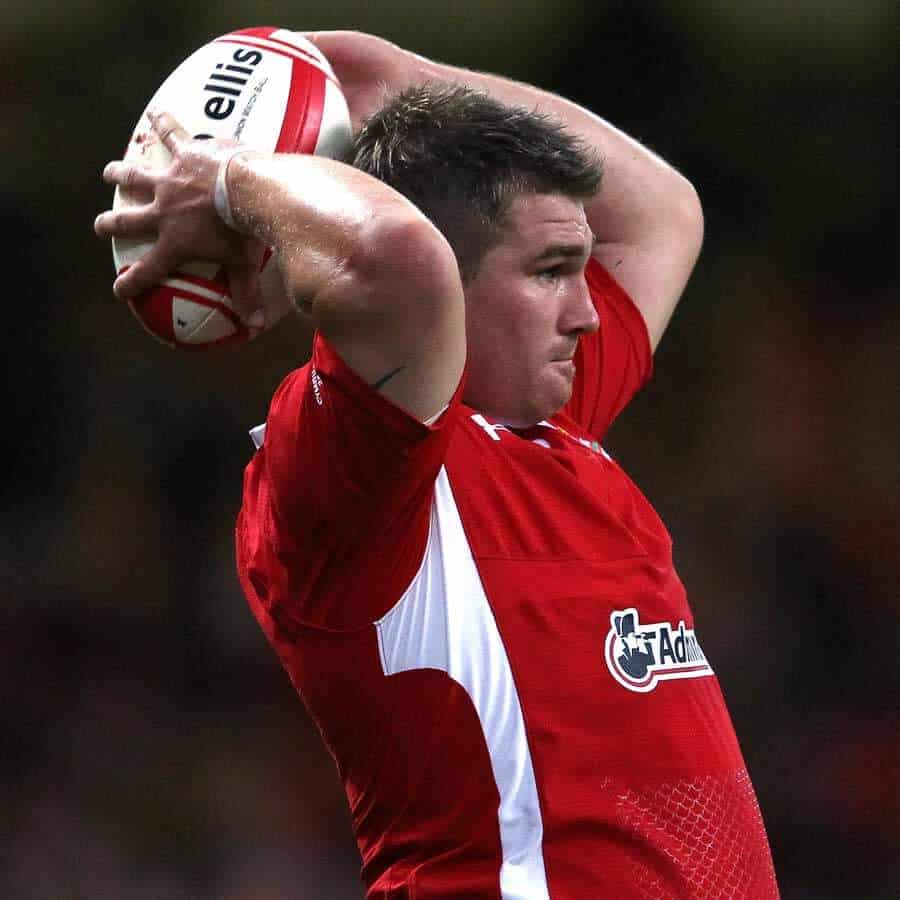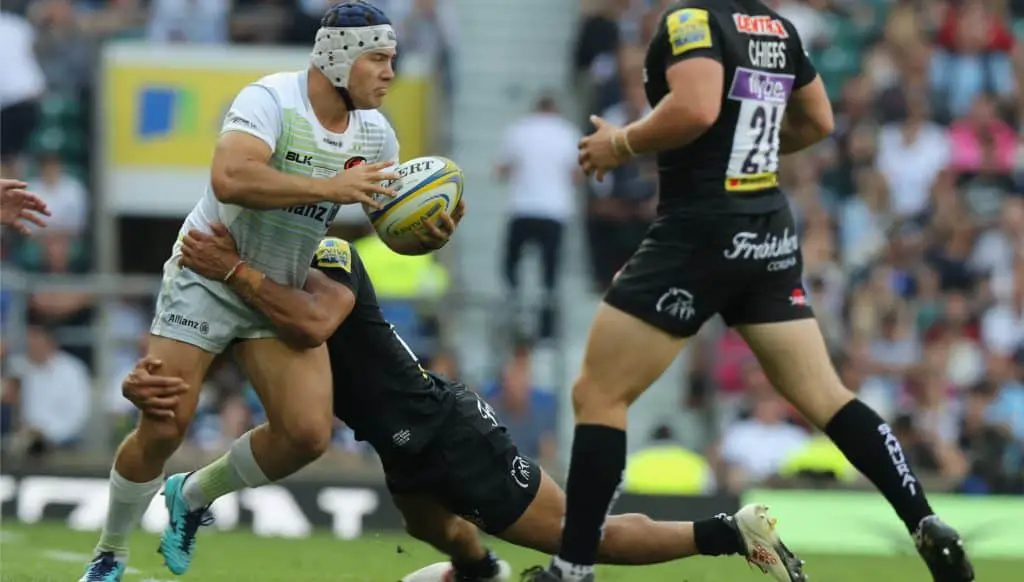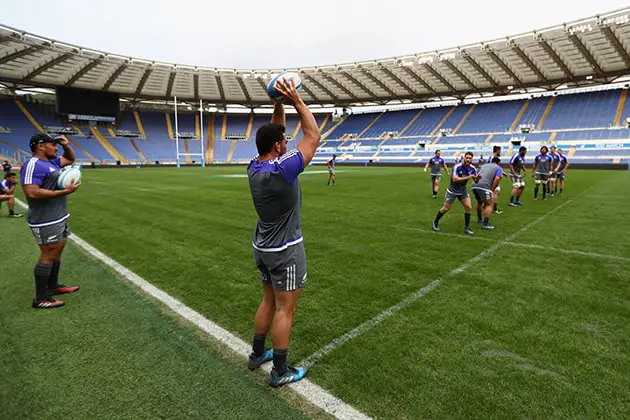
If you aren’t too familiar with rugby you may have done a double take when you first found out the name of one specific position in rugby. While the two jobs share the same name fortunately for many aspiring rugby players they do not perform the same tasks. It is time to find out exactly the role of a hooker on the rugby pitch.
What does a hooker do in rugby?
A hooker in rugby throws the ball in the lineout. They are also in charge of winning the possession of the ball during a scrum by hooking the ball back towards their side. Hookers are expected to be strong ball carriers and compete hard at the breakdown in a bid to steal the ball.

Hookers in rugby get their name from one of their key roles on the rugby field. During a scrum the hooker is at the front of the scrum, in the middle of action between the two props. The hooker’s job is to strike the ball and hook it back towards his own side. Without a good strike on the ball from a competent hooker winning a scrum can be very difficult.
You occasionally see the ball become stuck in a scrum when a hooker fails to strike the ball cleanly and the two evenly matched sides are able to drive over the ball. The result is a stalemate. If a scrum ends in a stalemate, often the side who had the put in will be penalised.

This exact situation happened in a game between Fiji and Australia. The Australian scrum was under so much pressure by the powerful Fijians that the Aussie hooke, Stephen Moore was unable to lift his feet making it impossible for him to hook the ball back to his teammates.
Even though the Fijians had prevented the Australians from winning the scrum they weren’t strong enough to drive the Aussies backwards. The scrum ended in the stalemate with neither side being able to secure the possession. After an eternity of pushing the referee eventually penalised the Australians.
Hookers are in charge of throwing the ball in during a lineout. When the ball goes out of bounds, across the touch line a lineout is called. During a lineout the two sides forward packs will form a line and the hooker of the side who has possession will throw the ball down the centre of the two lines of forwards.
Throwing the ball in during a lineout is one of the most important and difficult jobs of a hooker during a rugby match. The referees are very strict and demand the ball must be thrown straight. If the ball is deemed not to be straight the attacking side will lose possession and a scrum will be called.

Hookers not only have to ensure that they can throw the ball straight but they need to practice their ability to throw the ball quickly and a long distance. If a hooker throws the ball too slowly the defending side will be presented with an easy opportunity to steal the ball.
Hookers are expected to be able to throw the ball a great distance. Oftentimes they will need to find their back jumpers who are standing up to 10m back from the sideline. Teams also like to run a play where the hooker will deliberately throw the ball over the lineout to the backrower who is waiting to catch the deep throw. To successfully pull off this play hookers will need to be able to toss a rugby ball up to 15m. This is very difficult especially if the ball is wet or the weather conditions are poor.
The old school hooker of past generations was expected to just be a set piece master. As long as he threw the ball in straight at lineout time and hooked it during a scrum his job was mostly done. However, the modern hooker is expected to make a much bigger impact on the game.
Hookers are expected to be strong ball carriers. Their compact nature makes them naturally hard to tackle as their legs are often as wide as their thighs and their barrel chests are perfect for bouncing off would be tacklers.
You will often see hookers rampaging across the advantage line and nowadays it is not uncommon to see the more athletic hookers even stepping and exploding through the defensive wall and making a line break. Keven Mealamu of the All Blacks was one of the first really athletic modern hookers who was quick and agile with the ball.

The modern hooker is also expected to help the blindside flanker out at the breakdown with stealing the ball, providing teams with a dual threat. Hookers have the perfect body type which allows them to crouch over the breakdown and turn themselves into immovable objects. It is very difficult to cleanout a 5ft 10, 108kg boulder of the man who has such a natural low centre of gravity. A good hooker should be constantly competing at the breakdown and winning turnovers and forcing penalties for his side.
The final main responsibility of a hooker is in defence. A hooker will typically defend close to the ruck with his other two front row partners. Hookers are not expected to be making cover tackles in the backline and making diving ankle taps in the open field. The hooker’s responsibility is to stand right next to the ruck and prevent the opposition’s forward ball runners from crossing the advantage line. A hooker needs to be a master at tackling forwards who are pick and going off the back of the ruck or running one out from the ruck.
Conclusion
Hooker is one rugby position that has transformed over the years. In the old days hookers were only expected to throw the ball in during the lineout and hook it back during scrum time. In the modern the game the hooker is expected to be a dynamic ball runner and be blindside esque at the breakdown, competing hard to win turnovers and force penalties.
